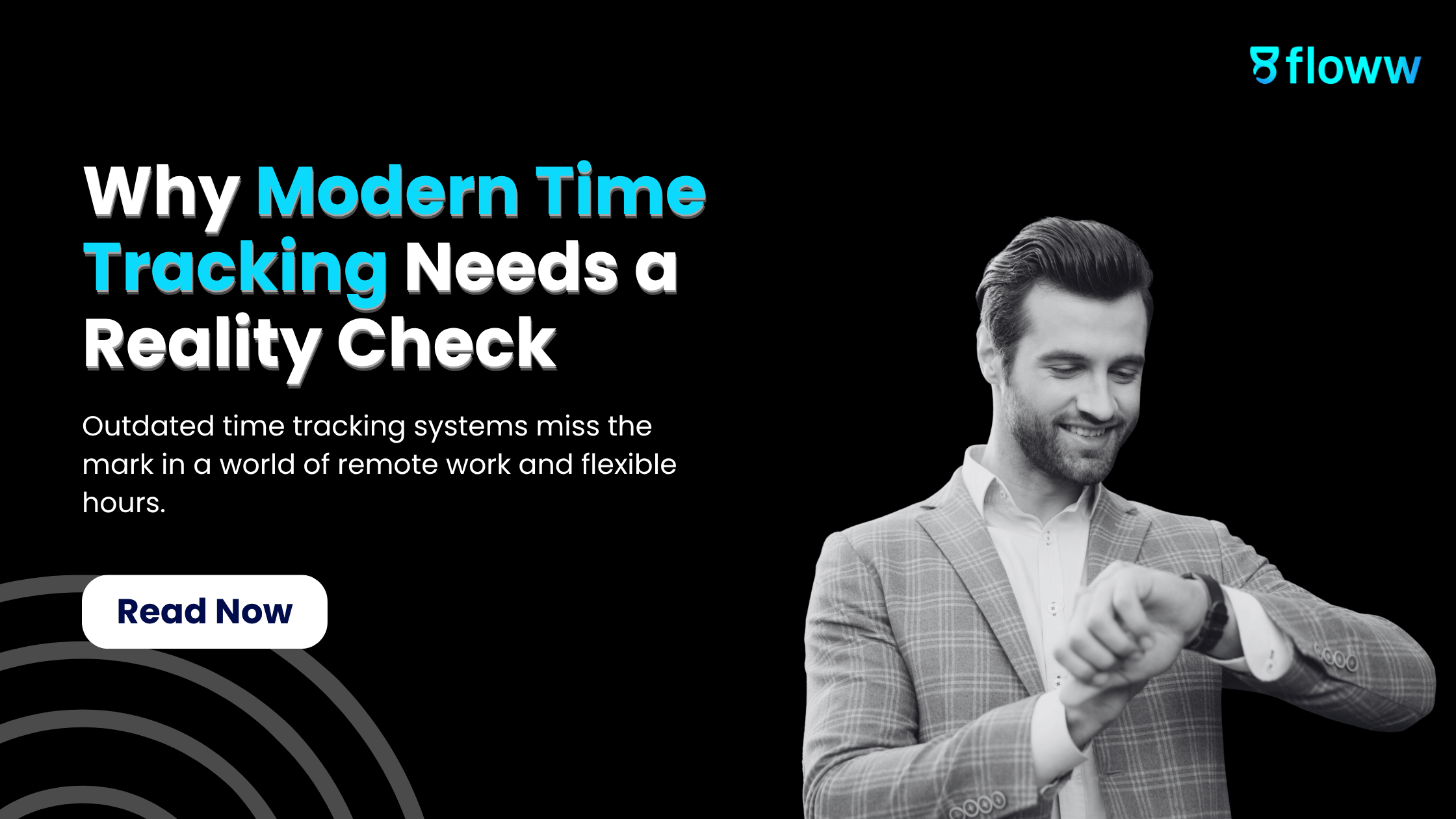Why Modern Time Tracking Needs to Reflect Reality
Clocking in and out doesn’t cut it anymore. Modern teams work across time zones, tasks, and tools, and your time tracking needs to keep up. Discover why realistic, flexible tracking systems are essential for productivity, trust, and truly understanding how work gets done.

It’s 9:00 AM. The timesheet says the workday has begun. But in reality, the team is just logging in, skimming emails, and maybe grabbing coffee. By the time true productivity kicks in, it’s 10:30. Now repeat that five days a week, across multiple employees, and you’ve got a massive mismatch between reported hours and real work.
This isn’t just a productivity issue. It’s a reality check.
In the age of remote work, project-based deliverables, and flexible schedules, the traditional concept of time tracking has become increasingly flawed. Clocks don't measure impact. Fixed hours don’t reflect flow. And yet, many businesses still rely on outdated employee time tracking systems that focus on when someone logs in rather than what they achieve.
It’s time we redefined what time means at work.
What is the Problem with Old-School Time Tracking?

For decades, timesheets have been treated like compliance checklists. They measure attendance, track hourly rates, and appease payroll systems. But what they often fail to capture is the complexity, creativity, and fluctuation of real work.
Here’s what’s wrong with conventional work hours trackers:
- They assume uniform productivity across all hours
- They punish breaks but don’t reward deep work
- They ignore asynchronous workflows
- They can feel intrusive, especially in remote or hybrid setups
Worse, they create a culture where hours worked matter more than value delivered.
Why MSMEs Can’t Afford to Track Time Incorrectly
For MSMEs, time is the most valuable currency. Teams are lean. Budgets are tight. Every hour matters. But if you’re not tracking time realistically, you’re likely misallocating resources, underestimating project timelines, or overloading your top performers.
Inaccurate or outdated time tracking leads to:
- Scope creep in projects
- Team burnout
- Missed deadlines
- Billing errors (especially for client work)
- Poor forecasting and planning
You can’t fix what you don’t see. And old systems aren’t showing the whole picture.
So, What Does Realistic Time Tracking Look Like?

Modern time tracking isn’t about watching the clock. It’s about understanding how, when, and where your team works best. That means adopting employee time tracking software that’s built for the fluidity of today’s work culture.
Here’s what it should offer:
- Flexible inputs: Let users log time manually or automatically, based on tasks, not just hours
- Context-aware tracking: Track time by project, client, or outcome, not just duration
- Visual dashboards: Show trends, not just totals. Help managers and team members reflect on how time is spent
- Mobile and remote compatibility: Allow tracking across devices, especially for field or hybrid workers
- Privacy-first design: No creepy screenshots or keystroke logs. Trust and transparency matter more
It should feel like a productivity partner, not a surveillance tool.
The New Time Metric
Work has changed, but time tracking hasn’t caught up. The rise of creative roles, asynchronous communication, and multi-project juggling means that hours no longer equal output.
Instead of just tracking "how long" someone worked, modern project time management software must ask:
- What was accomplished in that time?
- How aligned was the time spent with business priorities?
- Are there bottlenecks or repetitive tasks eating up bandwidth?
- Is someone spending too much time on shallow work?
The Rise of Human-Centric Time Tools
Modern teams crave autonomy and trust. When people are treated like adults who own their time, productivity soars. That’s why new-age employee time tracking tools are increasingly human-first.
They offer:
- Self-reflection tools: Employees can see their own time patterns, identify distractions, and adjust workflows
- Non-linear workday support: Recognize that some people work best at night, others in short bursts
- Goal tracking integrations: Sync with OKRs or deliverables, not just attendance
- Feedback loops: Use time data to initiate meaningful conversations, not reprimands
In short, they help people become more intentional with their time, without policing them.
How a Work Hours Tracker Helped a Growing Team Scale Without Burnout

Consider a small marketing agency juggling 12 clients, a 10-member team, and weekly deadlines. Before switching to a smart time tracker, their billing was inconsistent, timelines were always stretched, and no one knew who was overworked.
After adopting modern timesheet software:
- Each team member tracked hours by project and task
- Managers saw which clients were eating up too much unbilled time
- Team leads identified burnout risks by tracking excessive after-hours work
- Resource allocation became proactive, not reactive
The result? 3X better on-time delivery rate, happier clients, and reduced churn in the team.
Time Isn’t the Enemy. Ignorance Is.
Many teams resist time tracking because they associate it with micro-management. But the real enemy isn’t tracking. It's ignorance. Not knowing how time is spent leads to wasted resources, frustrated teams, and missed growth opportunities.
Smart, ethical, and user-friendly time tracking flips the script. It puts power back in the hands of the people who use it. It reveals patterns that help businesses grow smarter, not just harder.
The Future of Time Tracking Is Transparent, Flexible, and Intentional
Time is not a rigid metric. It ebbs, flows, and fluctuates with tasks, energy levels, and environments. If we want our teams to thrive, our tracking tools need to catch up to that reality.
Modern time tracking must reflect:
- The true rhythm of work
- The value created in each hour
- The people behind the timesheets
So ditch the one-size-fits-all timers. Embrace tools that honor flexibility, encourage focus, and provide real insights. Because when time tracking reflects reality, it stops being a burden and starts being a superpower.

